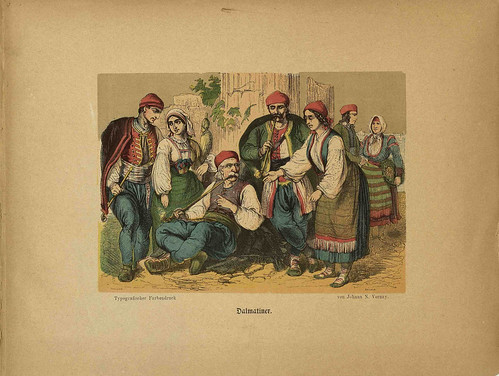

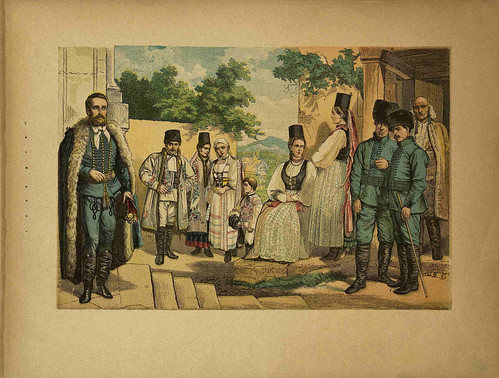
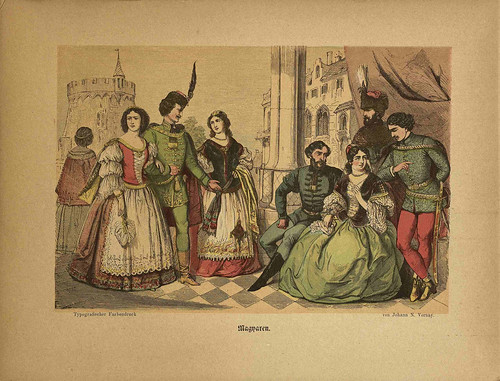
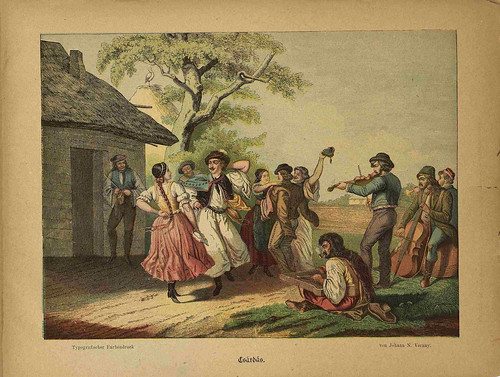
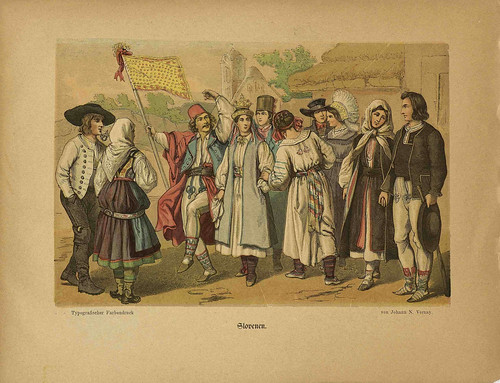
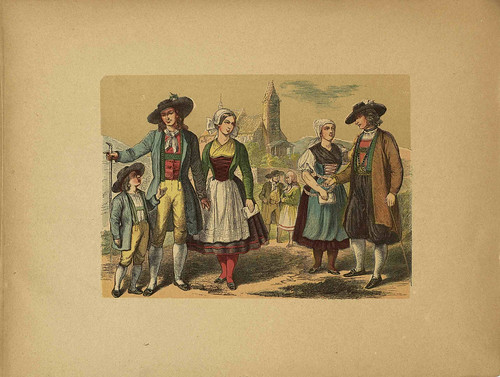
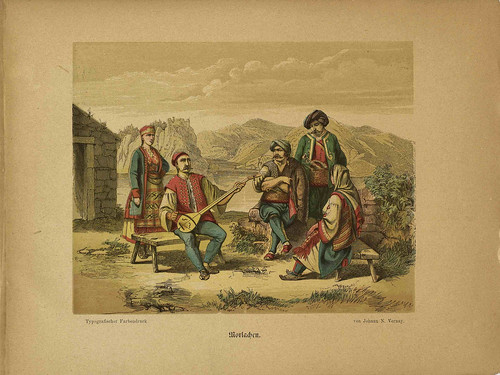
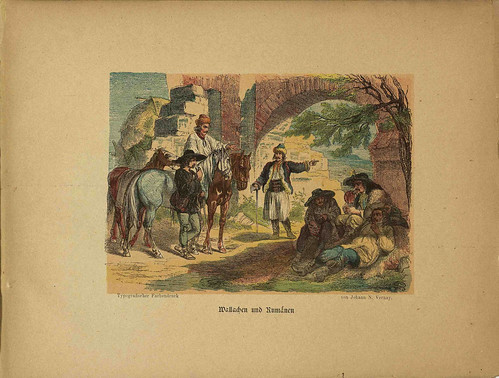
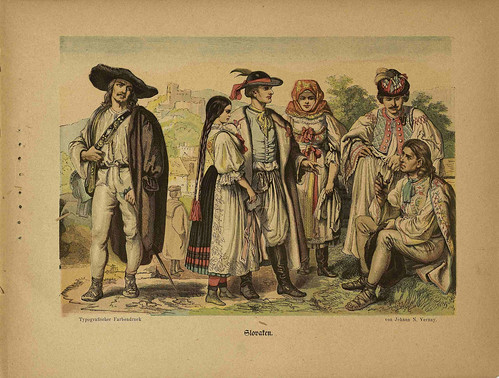


Among the small selection of digitised material at the Berlin Museum Art Library is an undated monograph printed by Johann Nepomuk Vernay depicting various peoples of the Austro-Hungarian Empire.
The Empire was a Hapsburg Monarchy, incorporating dual parliaments in two capitals (Vienna and Budapest) and existed from 1867 until disintegration as a consequence of WWI by 1918. The vast territory included ethnic groups from (today's) Bosnia, Italy, Czech Republic, Romania, Hungary, Poland, Serbia, Slovenia, Slovakia, Ukraine and Germany.
Judging from the active period of the Austrian printer, Vernay, the book was likely released between 1890 and 1918. The cover title is 'Oesterr:Ungarische Nationalitäten' but the instructional nature of the work is clear from the title page, 'Die Völker der österreichisch-ungarischen Monarchie : für die Jugend' (The Peoples of the Austro-Hungarian Monarchy: for youth).
I think all the book illustrations have been posted here, displaying traditional ethnic costumes from the majority of regions listed above : mouseover the images for - in most cases - the German name of the ethnic group depicted.
Via Archivalia.
Previously: costumes | ethnology.




No comments:
Post a Comment